How is it that no matter which direction we paddle, it’s always into a headwind?
That was the question I kept asking after two days and 20 miles of shoulder-throbbing strokes. I was in the Boundary Waters aboard Alpacka Raft’s interpretation of the flat water canoe, the Oryx, hoping to enjoy the mystique of the North Woods, encounter some wolves, and hook up with a few bruiser smallmouth bass.
As it turned out, the scenery was spectacular. No wolves, but I did see wolf shit, some moose and hear the positively primal calls of loons on the moonlit waters. The fishing? Meh… I caught only a few thumper smallies, but that could have had something to do with never getting more than one cast out there before battling the breeze again. The Oryx? It did what we asked it to do, though, I think the boat could have been a superstar if the trip had been better designed to employ the Oryx’s unique skill set.
All about Alpacka
Alpacka Raft manufactures a selection of packrafts, and packrafts are exactly what the term implies — lightweight inflatable boats that are easily transported and geared toward the more adventurous outdoors person.
Alpacka has been in business since 2000 and all of the boats are handmade in Mancos, Colorado. The company is owned and operated by Sheri Tingey, her son CEO Thor Tingey, and Thor’s wife Sarah. The entire family are lifelong outdoor adventurists. The Alpacka Raft executive crew are, perhaps, the company’s most demanding customers.
The specs
When inflated, the Oryx measures 129 inches long and 41 inches wide with an interior length and width of 74 and 15 inches, respectively, with about an inch and a half width variance between bow and stern. It’s a two seater with inflatable bow and stern seats. Airless, the Oryx folds up to a neat 19x8.25 inches. It weighs just under 11 pounds.

The Oryx has a carrying capacity of 800 pounds. The standard construction hull is proprietary 210-denier high count nylon, single side laminated with pigmented polyurethane film. The raft is held together with Vectran, a liquid crystal polymer yarn with five times the strength of steel. The boat’s floor is proprietary 840-denier ballistics nylon, laminated on both sides with polyurethane film. The seats are 200-denier oxford nylon and 210-denier high count nylons, with proprietary polyurethane laminate films. Grab loops and other attachments are manufactured in house out of scrap floor materials and USA made webbing. Nearly every component of the Oryx is “Made in the USA,” if that kind of thing matters to you.
Alpacka Raft says the Oryx is their fastest flat water design. The company also says that experienced paddlers can ride the Oryx through class II rapids, but other Alpacka models are better suited for rough river runs.
One of the most impressive features of the Alpacka Raft line is the incredible storage capacity. The air tubes can be accessed via a beefy, waterproof zipper — the cargo fly — and loaded down with supplies. Then, simply zip it up, air it up, and launch.

And the inflation device is pure genius. It’s a silk nylon bag. Alpacka calls it an inflation bag. You attach the bag to a screw-on nozzle on the boat, open the bag wide, move it a little (or if your lucky, point it toward a breeze), wrap up the top of the bag to capture air and then squeeze it into the boat. It takes surprisingly few bags of captured air to fill the Oryx, and then you can top it off with a few healthy breaths.
On the water
We had four boats filled with assorted writers and photographers, along with Thor and Sarah, for our expected three-day excursion. Pretty much every bit of camping equipment including tents, sleeping bags, cooking supplies, grub, and assorted other must-haves were stuffed into dry bags and loaded into the cargo hulls. Fly rods, fly boxes, water bottles, snacks and cameras rode inside the boats with us. In our boat, my nearly six-foot and 190 pound frame sat in the bow and Dave, my six-foot-two-inch 210 pound boat mate, took the stern seating. Later on, Dave told me his nickname was Gatortooth (he’s not sure how the nickname came to be). And since sharing a boat with “Gatortooth” sounds a helluva lot cooler than sharing a boat with “Dave,” any other references to my boat mate will be signaled by the use of “Gatortooth.”
Thor advised that we not stand in the boat, but then later on demonstrated that you could indeed stand and cast. I never tried it. Though, I stand to cast out of my canoe, and the raft seemed plenty stable even when climbing aboard, the risk wasn’t worth it in those cold lake waters when I could cast perfectly fine from a seated position. If I was solo on one of my local warm creeks, yeah, I’d be standing to cast.

Gatortooth and I were plenty comfy in the Oryx and gleefully sang it’s praises for about half a day. But five hours of paddling an inflatable raft on flat water and into the teeth of a 15 mph headwind hones a man’s critiquing skills. Two days of that routine will transform you into one ferociously nitpicking son-of-bitch who will cast a cold, critical eye on even the Alpacka name… which is actually pretty clever. It’s a corruption of the phrase Thor has been throwing around for decades while planning any adventure: “I’ll pack a raft.”
The price
The Oryx sells for $1,600. That’s right in line with top-tier canoes and kayaks.
What Works
Two things stand out about the Alpacka Oryx: Storage capacity and portability. I was amazed at the sheer quantity of equipment four relatively small rafts could swallow. And we still had room. I’d imagine you could pack two boats with enough supplies to keep four people out in the wilds for a week. The cargo fly is an incredible idea. All that space in the tubes occupied by air — why not use it for storage?
The boat weighs only 11 pounds empty, which knocks probably 100 pounds, on average, off of your shoulders for portaging. We only portaged once, and over a short distance (we did get to step over wolf shit on the portage, which made the trek an epic experience for me), but on trips with multiple portages, I can’t imagine a better vessel.

It’s plenty tough enough. Gatortooth and I had some concerns about the raft’s durability, and we discussed just what would happen if a missed hookset or sloppy backcast embedded a hook into the raft. But many a hook came into contact with the boat along with several jagged rocks (we did encounter some mild rapids between lakes) and the pointy limbs of downed trees. We had nary a problem, and by the time we made first camp never thought about it again.
What Doesn't
It’s a raft. That means it won’t track like a canoe. It’s not as fast as a canoe. And it damn sure catches more wind than a canoe. One of the last areas we paddled before the takeout point was through a bluff-lined narrow stretch of water with a howling headwind that I’d estimate to be in excess of 30 miles an hour sustained. If we’d stopped paddling hard at anytime, we’d have been swept back down the lake and might still be paddling somewhere in the Boundary Waters right now. I believe a canoe would have cut through the breeze and white-capping waters much better.
Space inside the boat is at a premium, especially with large and XL size dudes. I had my smallish camera bag, smaller still tackle bag, two fly rods, water bottle and rod tubes in front of me and I was either wadded up with my knees near my shoulders or spread out with my boots dipping in the water. There was simply no room for everything. Gatortooth had a bit more room in the back, but he also had less stuff. The solution would be a waterproof pack strapped to the boat, and that’s what a few other boaters did. Sadly, I was unprepared. But if you consider an Oryx you’ll need to consider purchasing a couple of waterproof packs for more storage.

Final Word
In the right situations, this boat is a wish come true. At 11 pounds, you can take it pretty much anywhere. Photographer Jeremiah Watt was on the trip and talked about how he would pack multiple Alpacka rafts and breakdown paddles into a checked bag and simply bring his boats on the plane with him for far-flung adventure. If you don’t have a truck to haul a boat — packraft. If you’ve got a long hike to water — packraft. Hell, buy one to keep in your vehicle for those impromptu opportunities to fish water that’s too deep to wade.
If you’re heading into the backwaters for days on end, that cavernous storage capacity will be appreciated immensely. I don’t believe there’s any way to pack a canoe — safely — with the volume of equipment consumed by the Oryx. Also, it’s all kept snug and dry.
The Oryx is simply another tool you can add to your outdoor toolbox. It will not replace a canoe, kayak, drift boat or even a jon boat. It’s not supposed to. It’s designed to help you get onto the water in places you can’t take any other boat. I’m seriously considering one for solo float fishing on local creeks where the current can gently carry me downstream with a paddle stroke merely here and there, and then I can deflate the boat and hike back to my truck without the need for shuttle service or a helpful friend.
There’s some real application out there for anglers and the Oryx. Every time I scan the Alpacka website, I envision a new scenario in which the Oryx could put me onto more fish. In those fishy scenarios, the best boat for the job is the boat I can bring with me. And I could likely bring an Oryx anywhere.





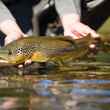
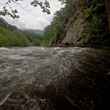
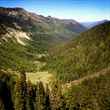



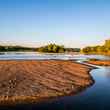








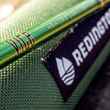
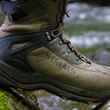



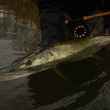

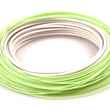
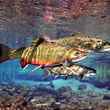
Comments
Reuben replied on Permalink
You may find that running the Alpacka bow bag on both the bow and stern would give you a load of room for storing gear that you need accessible while floating.
Pages